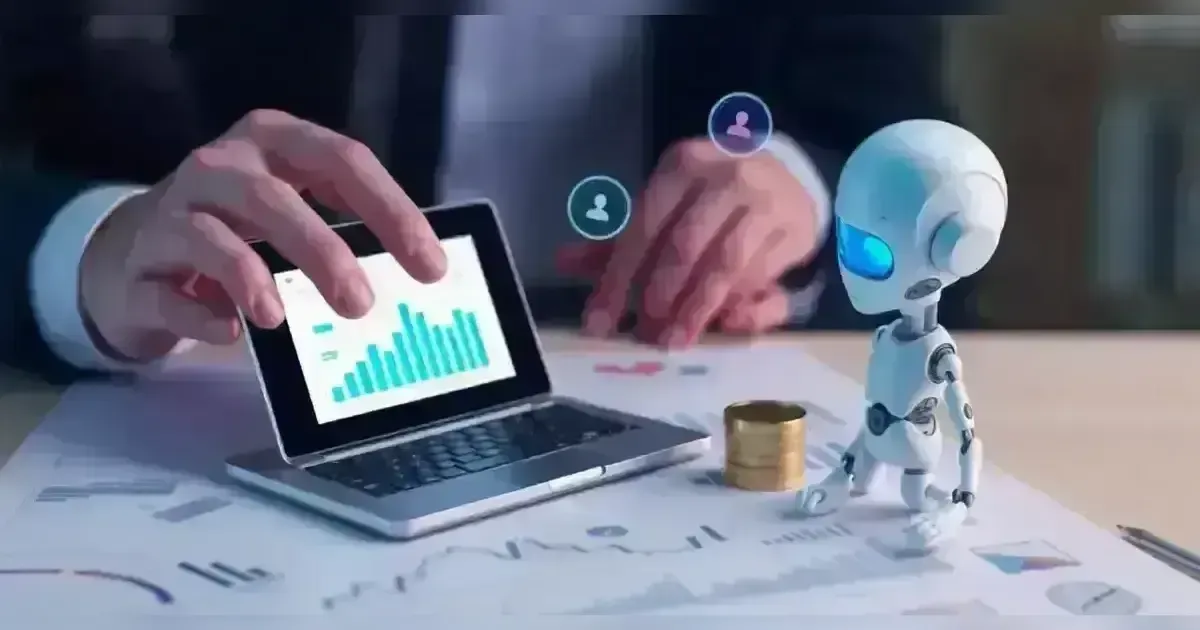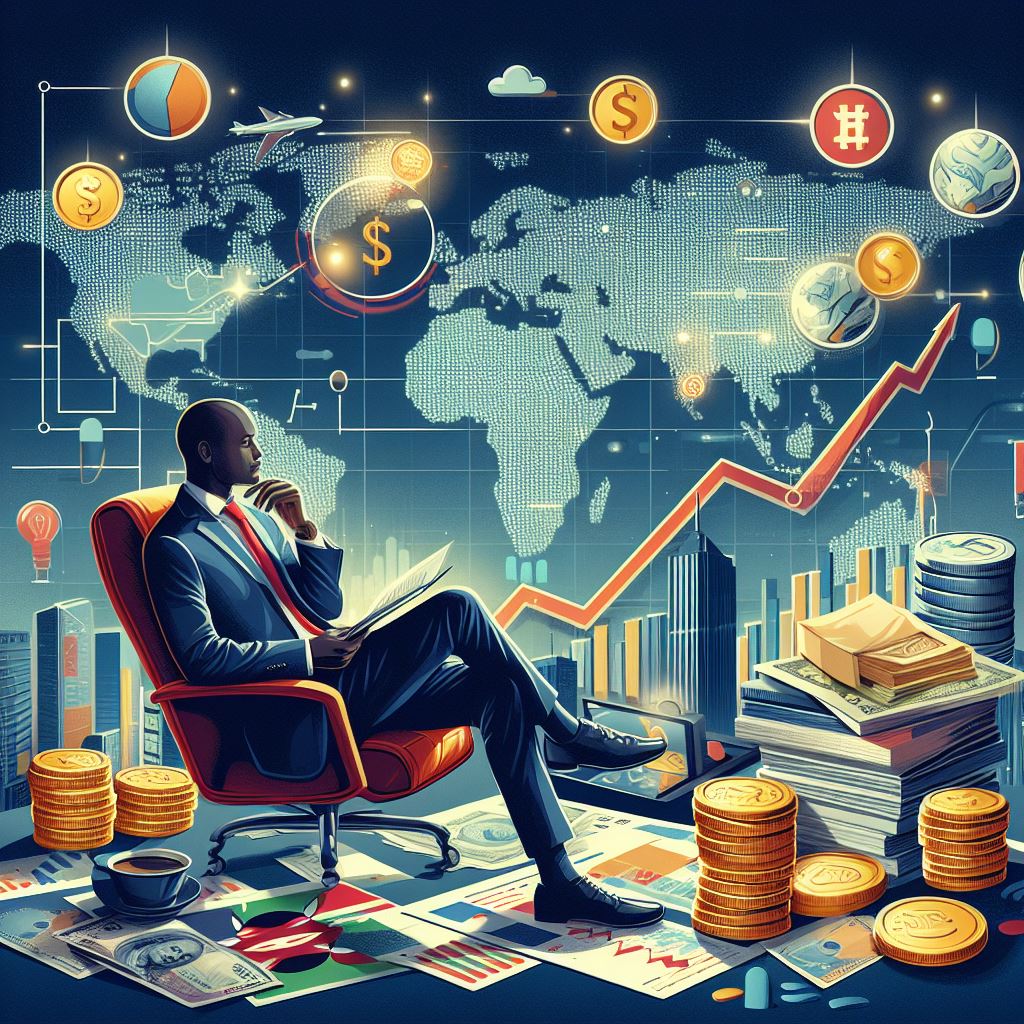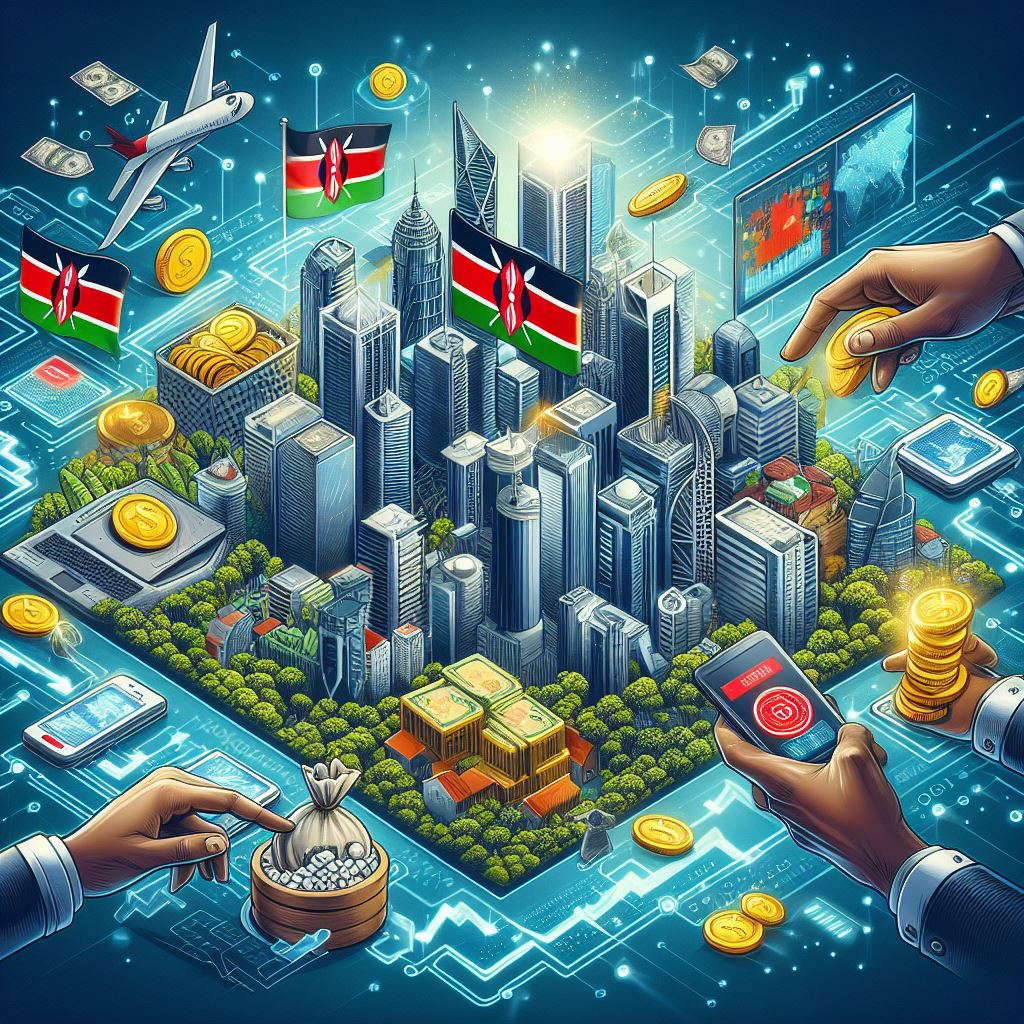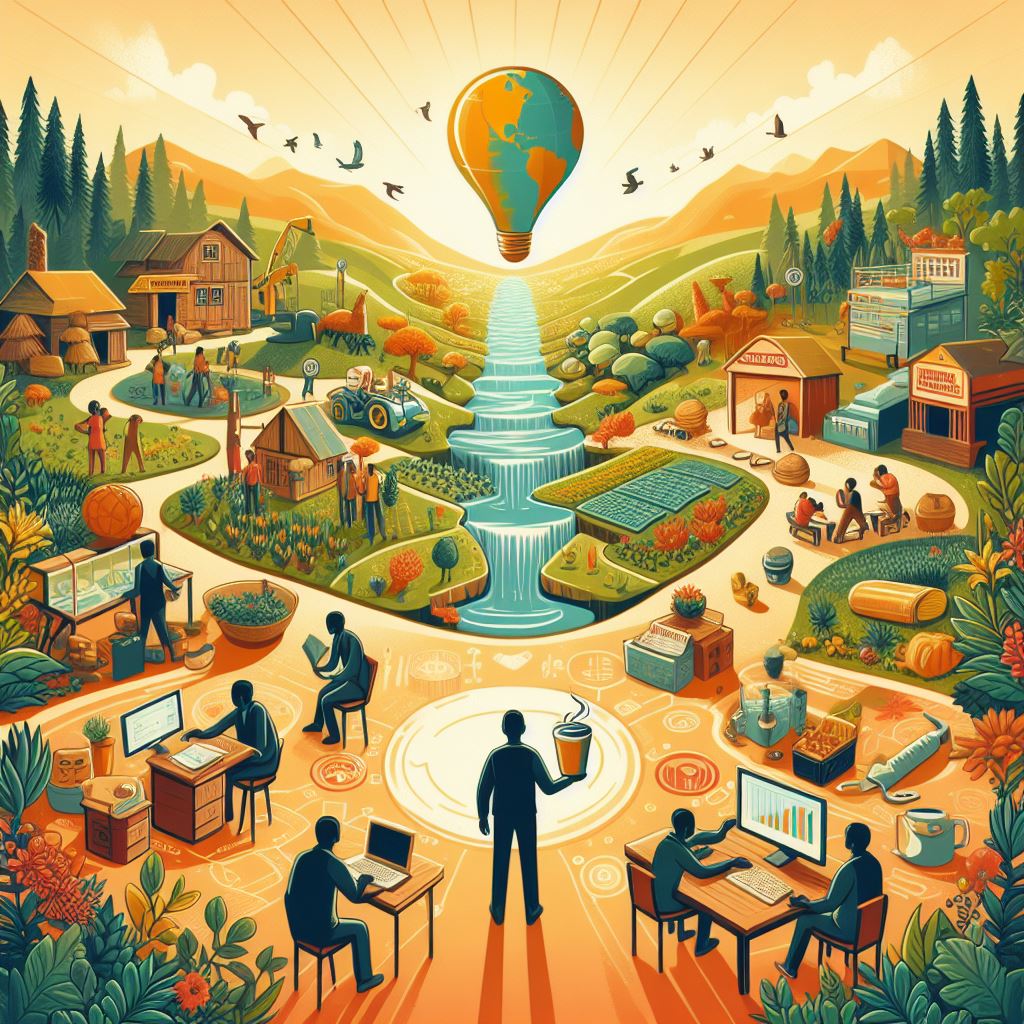Introduction.
The rapid application of artificial intelligence (AI), automation, and other digital breakthroughs creates new advanced age in industrial revolutions, replacing majority work models at a faster pace. Manufacturing, healthcare, and many other industries are getting chances right now to transform the ways they work, communicate with customers, and plan their business strategies. What used to be the hallmark of the established tech companies is now available to almost all sized ventures; this is why industries have evolved to become platforms for modernizing work processes and addressing issues generated by a highly connected global village. It is not just about implementing technologies as we are seeing it as a management of creating the right opportunities to enable the utilization of these new technologies.
In this article, we’ll go inside some of these concepts and see just how technology is changing industries and businesses around us. These innovations ranging from AI analytical tools, robotics, IoT networks, and the use of blockchain are arming organisations with the right information and tools to survive in an era characterized by disruption. We will consider the opportunity to expand both efficiency and accuracy and the ethical and labour force consequences of the transition. A shift accompanied in industries is slowly ensuring that such advancements are harnessed in a socially responsible manner in order to create a future whereby technology is used in a way that will make a difference in sustainable and positive ways.
1. The Rise of Artificial Intelligence: Using Data Driven Decisions.
Artificial intelligence has, hence, today become a major commodity in modern industries since it facilitates the exploitation of organizational data with enhanced decision-making skills.. With the help of such complex tools as machine learning algorithms and others, enterprises can process huge volumes of data to predict trends, improve work processes, and increase the value of customer experiences. AI applications such as the predictive maintenance enables industries track the health of their equipments, when they are most likely to develop faults and hence the cost of having them fixed or replaced is significantly reduced hence enabling industries to function optimally. Besides, accurate segmentation by customer knowledge based on AI helps firms to help to fine tune what they offer: predictions of buying habits and more customer satisfaction, thus making a business better placed for today’s complex environment.
AI also helps in creating new product development and supply chain management solutions and novel methodologies for risk mitigation. AI is being implemented in industries for processing the data in real-time. For leaders to make decisions that were not possible earlier through data. However, for organisations to unlock the full potential of AI, there are issues to do with data availability, quality, ethical considerations, and the black box nature of algorithms. With insights powered by Artificial Intelligence expected to form the basis for strategy in many industries, there is the need to establish the proper guidelines in the use of Artificial intelligence to enhance confidence in consumers as well as provide a basis for growth in the long run. AI is not just utilitarian in aspect to optimise various commercial processes but also transformative for organisations and their function in contemporary markets.
2. Automation and Robotics: Improving General Utility &Accuracy.
Advanced technology like automation and robotics is becoming the new norm for industries to run and highly transform the level of扱 and precision in industries. in manufacturing, the mechanical aspects of the assembly lines are alleviated by the use of automated tools and Robots, thus errors of manages are removed from the process, and higher speeds of assembly are attained. However, other sectors such as logistics and warehousing involve repetitive tasks and accurate handling of good such as sorting of assorted packages and management of stock through robotics. Cobots foster higher production by performing tasks cooperatively with human beings and not replacing the human force in the production line. Other advantages of automation are the abilities to increase client satisfaction as well as counter higher demands with elasticity that enable production for clients and market instabilities.
It is also crucial for industries where the problem of staff shortage rises or where it is almost impossible to organize the process of scaling. With the help of automated solutions, companies can achieve the flexibility they require to perform well in uncertain conditions, increase operation efficiency, and save money at the same time. Automation enables long-term cost efficiency in a way that other cost saving approaches can not cause because it also delivers homogenous quality, which is important in operating environments with clearly stated standards of acceptable work. However, the combined use of robotics and automation presents many scenarios that need great planning to address the workforce. The support the transitions and keep ethical practice. While more and more organizations adopt these technologies, they are reshaping the contemporary world of work and opening the possibility of a symbiosis between humanity and technology that will shape future work environments.
3. IoT and Connectivity: Building the Smart Industry.
IoT is creating the basis for the connected industrial environment in which machines, systems, and people interact with each other. With the use of IoT gadgets, it is possible for businesses to gather information in real-time over different processes and aspects such as the health of equipment and lighting conditions that enable its organizations to make correct anticipations and take action. First of all, IoT makes it possible to link objects and create a system of control and communication between devices that enhance existing industries, making them smart industries. Also, this connectivity increases operating transparency within managerial functions because every provider and consumer is associated with knowing every procedure of manufacturing and distribution, which in turn promotes operation effectiveness.
From this perspective, the IoT trend has been even more influential in pushing radical change beyond improvements to operational processes. In the manufacturing industry and logistics, for instance, IoT systems track the flow of products and spot inefficiencies that can be corrected in real-time fashion. Furthermore, IoT solutions are relevant to the formation of sustainable practices, which provide the key information on resource consumption. On the one hand, IoT has made great benefits. On the other hand, there exist many issues such as data security and privacy and the requirement of infrastructure investment. For organizations to adopt IOT in creating intelligent and progressive industries, they need to have secure layers that protect their operations and customers from hacking.
4. Blockchain for Transparency and Security in Supply Chains.
Supply chain is also being revolutionized by blockchain technology through increased efficiency in issues such as traceability, transparency, and thus security all through due to proper utilization in fields such as regulatory ones. By using Blockchain technology, it becomes possible to have an open ledger that records each transaction that goes through the supply chain, allowing companies to trace their products through the supply chain. This assists in minimizing counterfeiting since the various parties involved can easily see the other’s activities. This reduced trust in products fabricated in affected countries or sourced from unscrupulous suppliers, investors, and clients reassured, through accreditation, that they were buying from the right business people, with quality goods and free from fraud and unethical practices. In the case of industries such as the pharmaceutical or the food industry, where it is important to have an end-to-end record, the blockchain simplifies compliance with the standards.
Apart from the issue of traceability, block chain can improve the trust of organisations within the networks by providing a secure environment where all parties in the chain can have comprehensive data. The smooth flow of information also cuts out some overhead processes and time, thus decreasing the probability of many mistakes, giving better value for money in the long run. In modern markets, consumers and partners are more concerned about responsibly. Therefore, blockchain that creates an honest and transparent environment for exchanging goods and services can be important and effective. However, for applying blockchain, companies have to spend a lot of money and achieve interoperability, which can become challenges for many firms. Through blockchain, industries can enhance difficult supply chain issues, and they become more reliable and reliable to the current generation.
5. Augmented Reality (AR) and Virtual Reality (VR): An appreciation of knowledge maintenance, therefore, requires a redefinition of training and maintenance.
Two related technologies of AR and VR are transforming workforce training and maintenance through complex and sophisticated simulations. AR, for example, has been applied in industries such as manufacturing, logistics, and the healthcare sector to train employees on scary procedures with little or no risk or costly setups. The practice tests also give the employees the required confidence and expertise to handle particular equipment or procedures. This training methodology results in low employee turnover and higher safety performance, and this way, the industries are able to sustain high-quality consumption without the likelihood of expensive mistakes resulting from lack of sufficient training.
Apart from training, AR and VR are valuable in maintenance and remote help; by using the first-person view, an expert can remotely lead the technician as a heads-up display at the maintenance site. These technologies allow technicians to view technical data and superimpose repair instructions on to the actual object to reduce downtimes and reduce interruptions. With so many organizations embracing AR and VR technologies for business, new standards of efficiency and training are emerging in workplaces. While implementation costs are still an issue, AR/VR can drastically improve productivity and safety, giving them special value in the age of industrial transition.
Conclusion.
Profound opportunities are associated with the application of AI and automation as well as the diffusion of digital technologies, yet ethical concerns and employment-related questions that businesses face. Technological Displacement is a major factor, this is because automation and AI may cause some functions to be eliminated from the workforce, leaving some communities and causing gaps between job skills. In order to tackle these problems, businesses are contributing towards reskilling solutions with an aim to equip employees for new roles. The work also calls for setting ethic standards on AI and other algorithms by making them more explainable, non-discriminatory, and safe. It is therefore possible for companies to incorporate responsible innovation practices to enable them to deliver technologies that are accepted by their end users and customers, thereby enhancing the culture of trust and inclusiveness in the current technological evolution.
Ethical issues even include how data is collected, protected, and the roles of decision-making in AI. Given the fact that businesses generate and analyze huge amounts of data, there is a growing need for protecting consumers’ data and meeting emerging data protection legislations. AI solutions also have to be responsible for eliminating chances of drawbacks such as bias and malrepresentation. As these technologies find their ways into the different organizations, it becomes the role of the organization to develop guidelines that can help ensure that the new technology is developed in a way that respects the right of the society while at the same time allowing technological advancement to occur. In this section, the approach to these ethical concerns will be outlined in an effort to provide companies a guide for achieving a future where technology is used for the improvement of all.

























